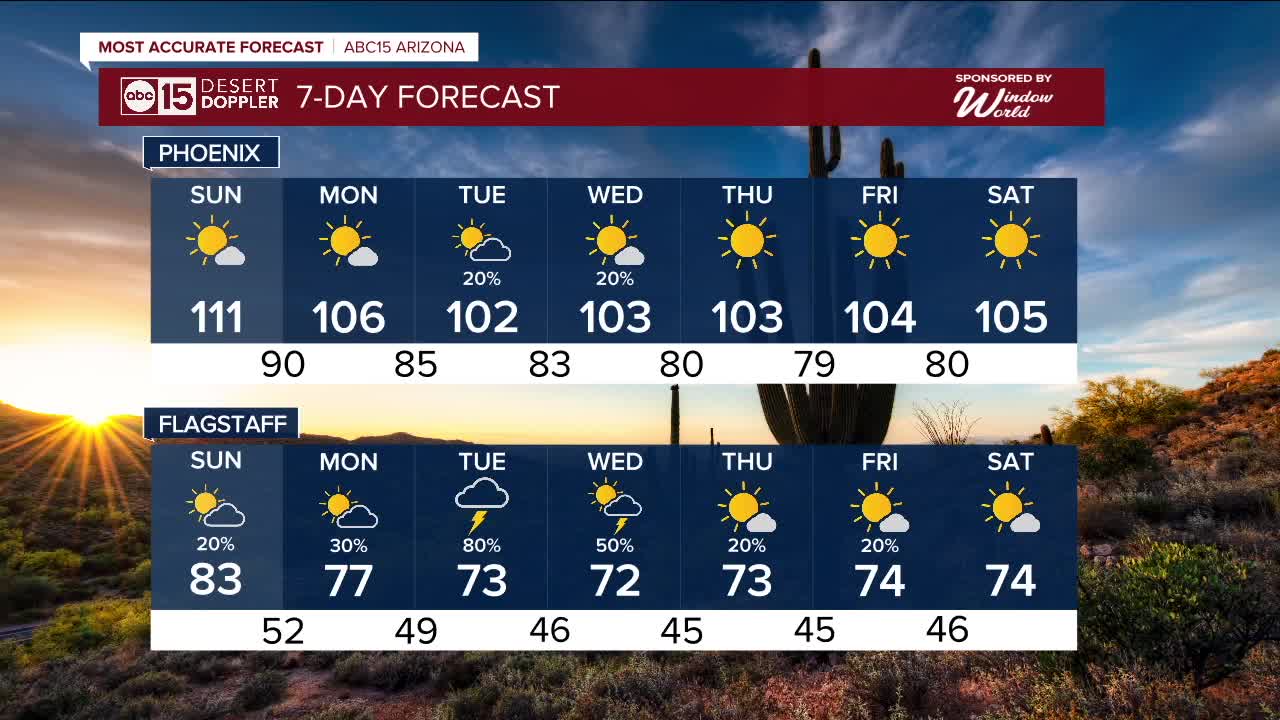The Challenges In Forecasting Excessive Heat And Issuing Warnings

Table of Contents
The Complexity of Heatwave Prediction
Predicting heatwaves accurately is a complex undertaking, fraught with challenges that impact the effectiveness of early warning systems and ultimately, public safety. Several key factors contribute to this complexity.
Limitations of Current Meteorological Models
Current meteorological models, while improving, still face significant limitations in precisely predicting excessive heat events.
- Difficulty in precisely predicting localized temperature variations: Microclimates, influenced by factors like urban heat islands and geographic features, significantly impact local temperatures, making precise prediction challenging.
- Influence of urban heat islands: Cities often experience significantly higher temperatures than surrounding rural areas, creating "urban heat islands" that are difficult to model accurately.
- Challenges in forecasting the duration and intensity of heatwaves: Predicting how long a heatwave will last and how intense it will become remains a significant hurdle. Slight variations in model inputs can lead to substantial differences in predicted outcomes.
- Limitations of current climate models in projecting future heatwave frequency and severity: While climate models project an increase in heatwave frequency and intensity due to climate change, precise predictions for specific regions and timeframes remain uncertain.
The limitations stem partly from the resolution of current models. High-resolution modeling and advanced data assimilation techniques are crucial for improving prediction accuracy by capturing finer-scale atmospheric processes and incorporating more observational data. However, computational costs and data availability remain significant barriers.
Data Scarcity and Quality Issues
The availability and quality of meteorological data are critical for accurate heatwave forecasting. Unfortunately, significant gaps and inconsistencies exist.
- Insufficient historical data in some regions: Many areas, particularly in developing countries, lack sufficient long-term temperature records needed to train and validate predictive models.
- Inconsistent data collection methodologies across different locations: Variations in equipment, measurement techniques, and data reporting procedures across different weather stations can introduce biases and inconsistencies into datasets.
- Lack of reliable ground-based temperature measurements in certain areas: Sparse networks of weather stations, especially in remote or sparsely populated regions, limit the spatial resolution of temperature data.
- The need for more accurate and comprehensive weather station networks: Investing in denser and more advanced weather station networks is vital for improving the quality and spatial coverage of temperature data.
Data scarcity hampers the development of robust predictive models. Citizen science initiatives, where members of the public contribute temperature readings using personal weather stations, can help to fill data gaps, particularly in areas with limited official monitoring. However, ensuring data quality and consistency from such diverse sources remains a challenge.
The Role of Climate Change
Climate change is exacerbating the challenges of heatwave forecasting.
- Increased frequency and intensity of heatwaves due to climate change: Scientific consensus indicates that climate change is leading to more frequent, intense, and longer-lasting heatwaves globally.
- Challenges in incorporating climate change projections into short-term forecasts: Integrating long-term climate change projections into short-term heatwave forecasts is complex and requires sophisticated modeling techniques.
- The need for climate-informed heatwave warning systems: Warning systems must account for the changing climate to accurately assess future risks and communicate them effectively to the public.
- Uncertainty in future climate scenarios complicates long-term forecasting: Uncertainty about future greenhouse gas emissions and their impact on the climate complicates long-term projections of heatwave frequency and intensity.
Understanding the interaction between climate change and short-term weather patterns is crucial for improving heatwave prediction. This requires further research and development of climate-informed forecasting models.
Communicating Heat Warnings Effectively
Even with accurate forecasts, effective communication is essential to protect public health during heatwaves. Several challenges exist in disseminating heat warnings effectively.
Reaching Vulnerable Populations
Reaching the most vulnerable members of the community is crucial.
- Challenges in reaching elderly individuals, people with disabilities, and low-income communities: These groups may have limited access to information technology or may face other barriers to receiving and understanding warnings.
- The need for multilingual and culturally sensitive communication strategies: Warnings must be accessible to people of all linguistic and cultural backgrounds.
- Utilizing diverse communication channels (social media, mobile alerts, community outreach): A multi-channel approach is needed to ensure broad reach and impact.
Effective strategies include partnering with community organizations and local leaders who have strong ties to vulnerable populations. Leveraging social media platforms and mobile alert systems can also significantly improve reach.
The Importance of Clear and Concise Messaging
The language and format of heat warnings are critical for public understanding and action.
- Using easily understandable language to explain heat risks: Avoiding technical jargon and using plain language is key.
- Providing actionable advice on heat preparedness and safety: Warnings should clearly state what actions individuals should take to protect themselves.
- Communicating the urgency and severity of the heatwave threat: The message should clearly convey the level of risk and the need for action.
- Avoiding technical jargon and using plain language: Simplifying the message to make it readily understandable is crucial.
Effective risk communication principles should guide the development of heat warnings. Testing messages with target audiences can help ensure clarity and effectiveness.
Evaluating the Effectiveness of Warning Systems
Regular evaluation is essential to improve warning systems continuously.
- Monitoring the public's response to heat warnings: Tracking public behavior and awareness in response to warnings is vital.
- Assessing the impact of warning systems on heat-related illnesses and mortality: Measuring the effectiveness of warnings in reducing heat-related health impacts is crucial.
- Improving warning systems based on feedback and evaluation: Continuous improvement is essential for adapting to evolving conditions and needs.
- Using data analytics to improve future communication strategies: Analyzing data on public response can help to refine communication methods.
Regular evaluation and feedback mechanisms are vital for ensuring that heat warning systems are as effective as possible in protecting public health.
Conclusion
Accurately forecasting excessive heat and issuing timely warnings remains a complex challenge. The limitations of current meteorological models, data scarcity, the influence of climate change, and the need for effective communication strategies all contribute to the difficulties involved. Improving heatwave forecasting requires significant investment in advanced modeling techniques, improved data collection, and more sophisticated communication strategies tailored to reach vulnerable populations. By addressing these challenges and investing in research and development, we can improve our ability to protect communities from the dangerous impacts of excessive heat and build more resilient societies. Continue learning about advancements in heatwave forecasting and the importance of timely heat warnings to better protect yourself and your community.

Featured Posts
-
 Chantier A69 Sud Ouest La Decision De Justice Attendue
May 30, 2025
Chantier A69 Sud Ouest La Decision De Justice Attendue
May 30, 2025 -
 Algorithms And Mass Violence Exploring Corporate Responsibility In Radicalization
May 30, 2025
Algorithms And Mass Violence Exploring Corporate Responsibility In Radicalization
May 30, 2025 -
 Epcot International Flower And Garden Festival A Complete Guide
May 30, 2025
Epcot International Flower And Garden Festival A Complete Guide
May 30, 2025 -
 Brooke Shields Reflects On Life Choices Agassi Aging And Motherhood
May 30, 2025
Brooke Shields Reflects On Life Choices Agassi Aging And Motherhood
May 30, 2025 -
 Preparate Para El Concierto Ticketmaster Y Setlist Fm Juntos
May 30, 2025
Preparate Para El Concierto Ticketmaster Y Setlist Fm Juntos
May 30, 2025
Latest Posts
-
 Elon Musks Awkward Saudi Encounter With Donald Trump
May 31, 2025
Elon Musks Awkward Saudi Encounter With Donald Trump
May 31, 2025 -
 Trumps Changing Stance On Musk Cnn Data Chief Explains
May 31, 2025
Trumps Changing Stance On Musk Cnn Data Chief Explains
May 31, 2025 -
 Madrid Atp 1000 Girons Victory Over Berrettini
May 31, 2025
Madrid Atp 1000 Girons Victory Over Berrettini
May 31, 2025 -
 Munich Tennis Zverev Battles Griekspoor In Bmw Open Quarter Finals
May 31, 2025
Munich Tennis Zverev Battles Griekspoor In Bmw Open Quarter Finals
May 31, 2025 -
 Zverev Vs Griekspoor Bmw Open 2025 Quarter Final Highlights
May 31, 2025
Zverev Vs Griekspoor Bmw Open 2025 Quarter Final Highlights
May 31, 2025
